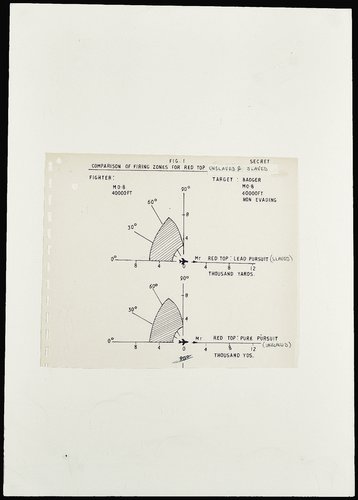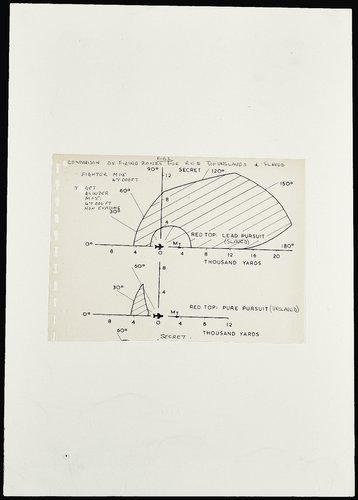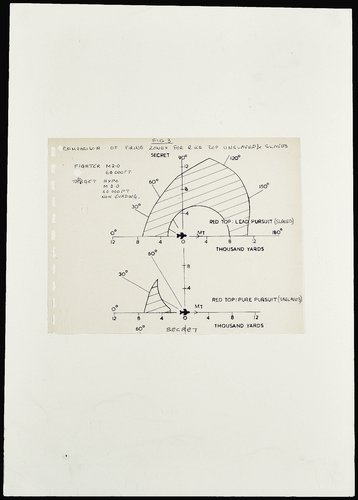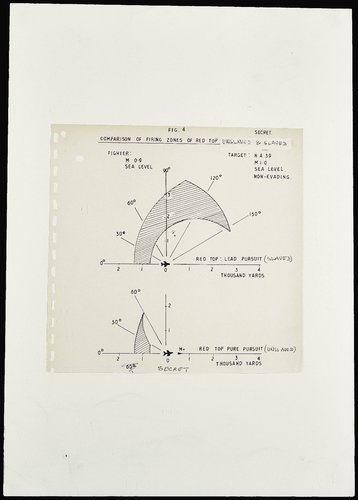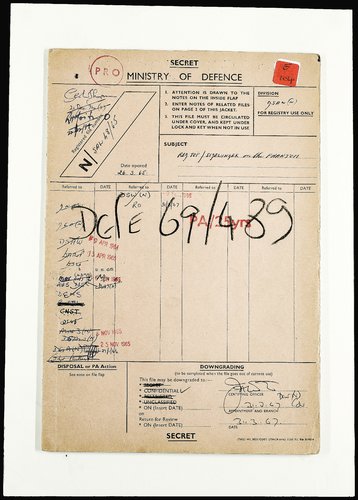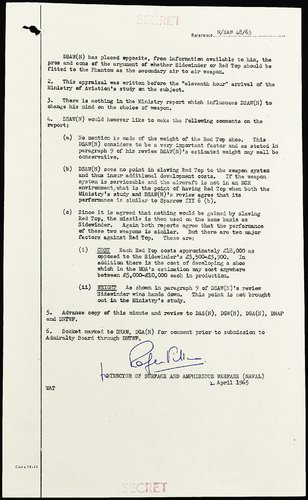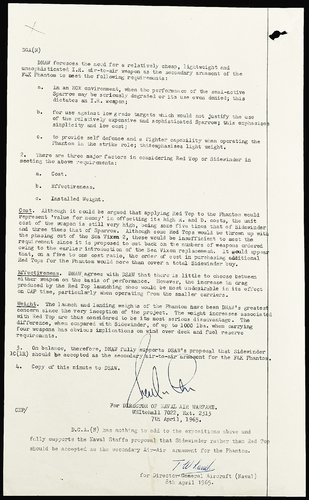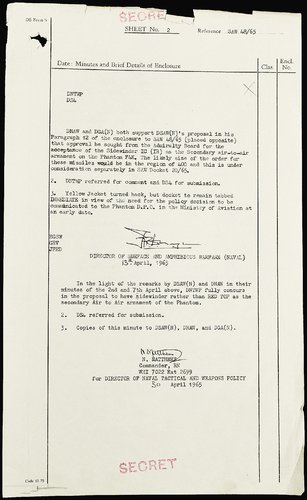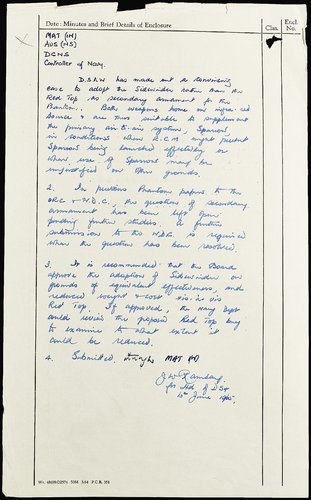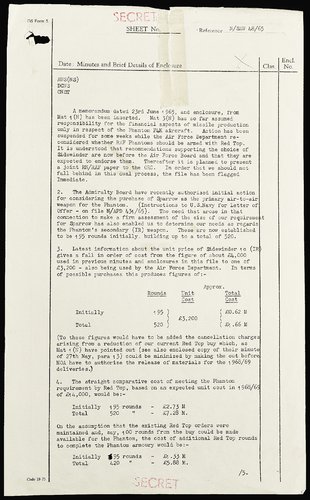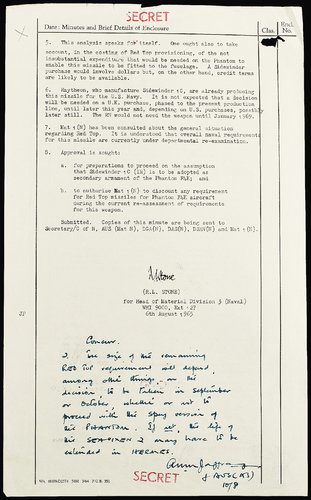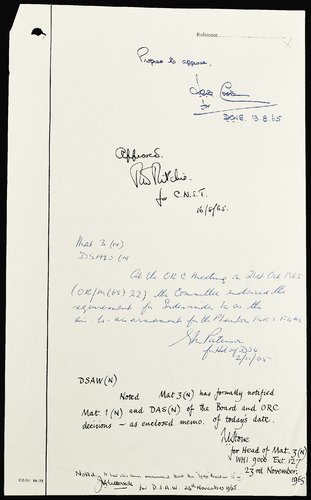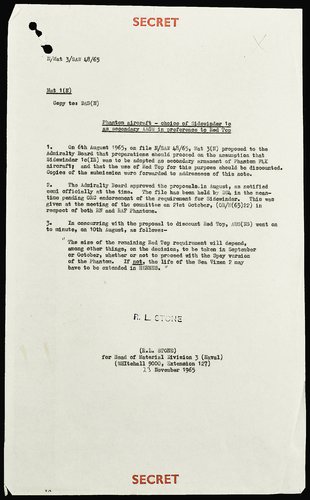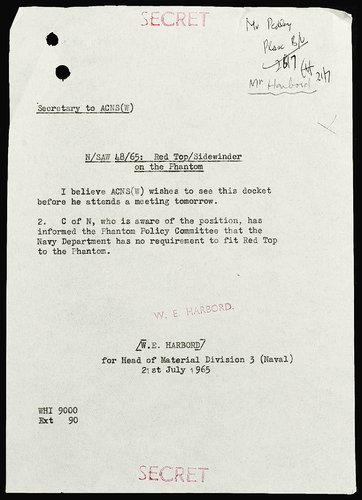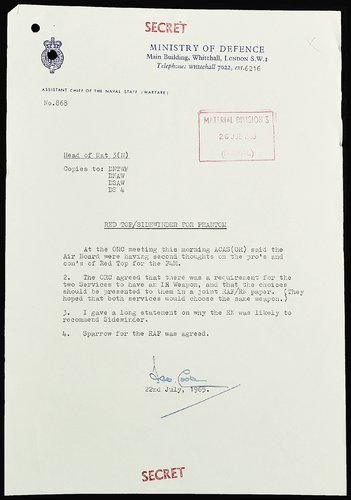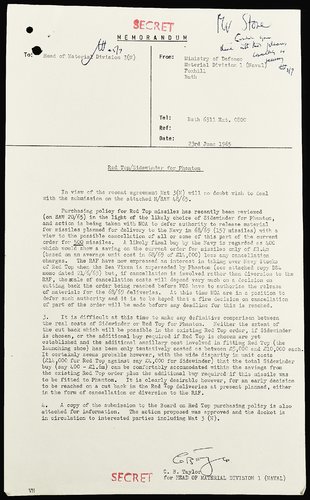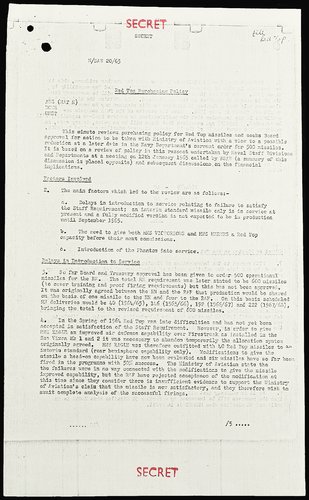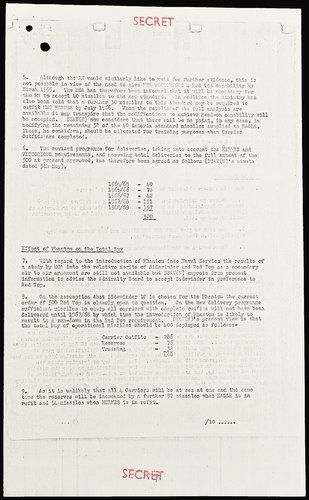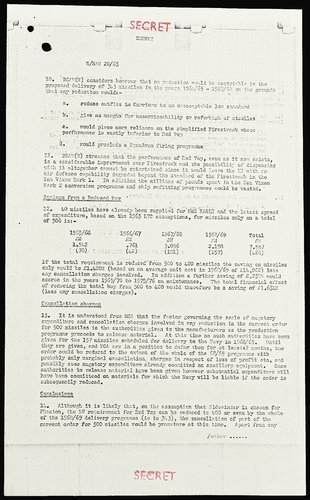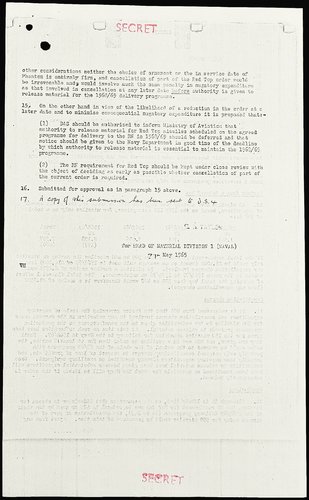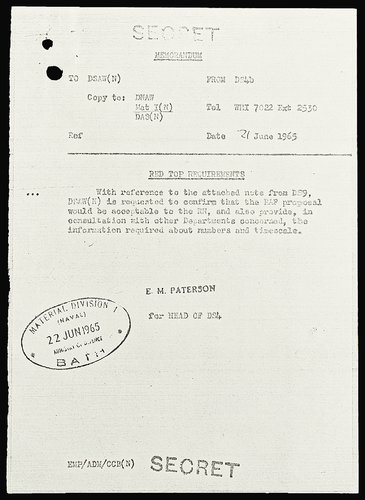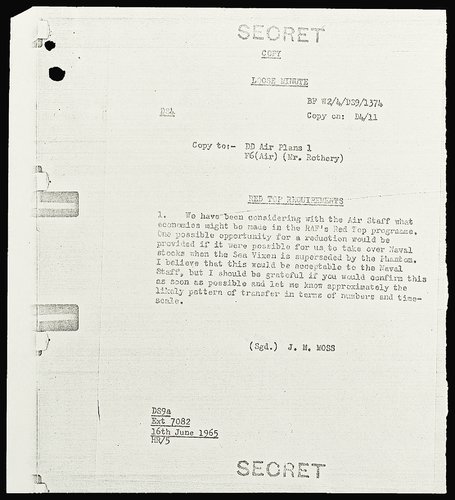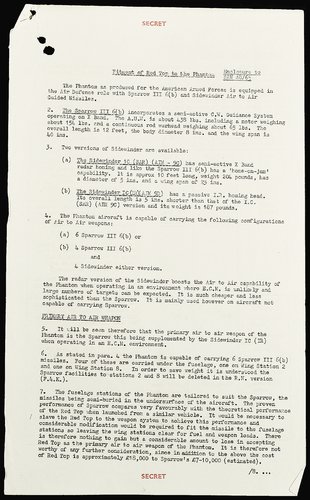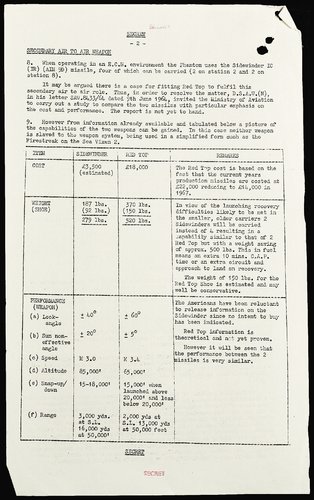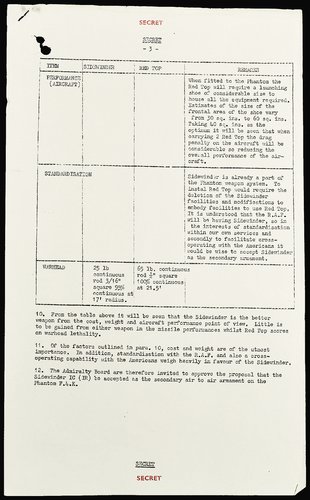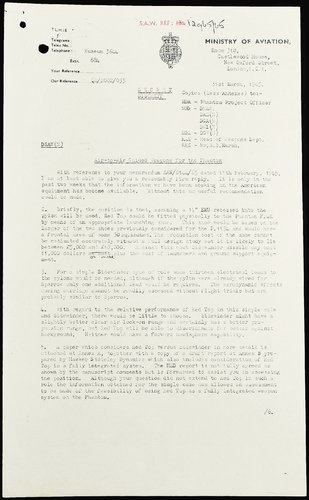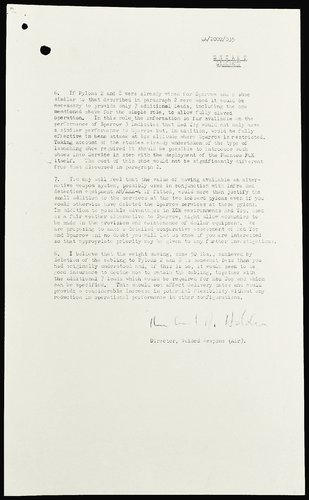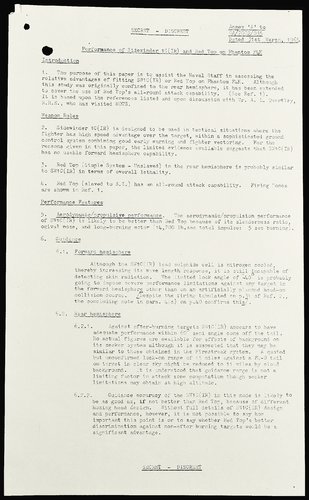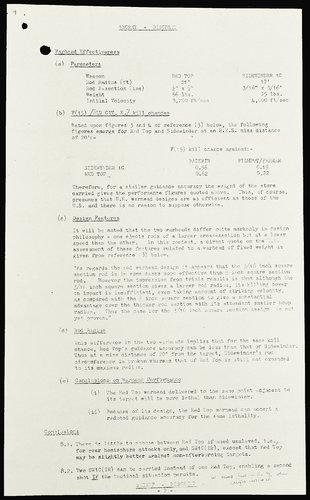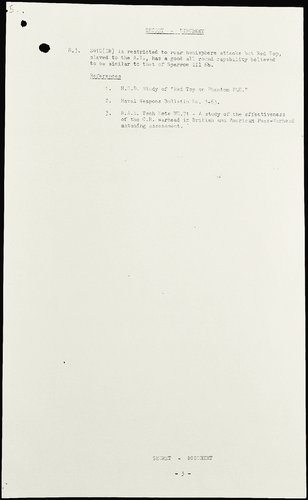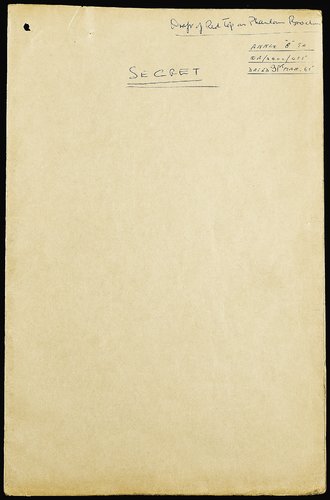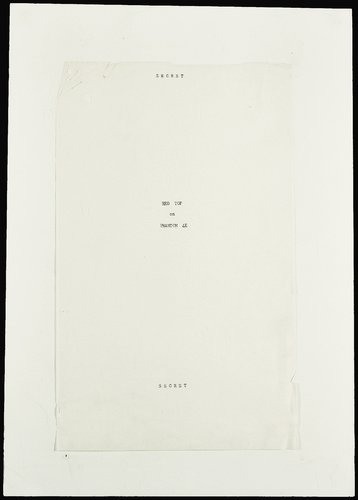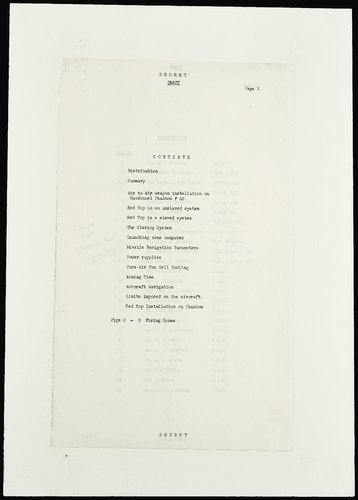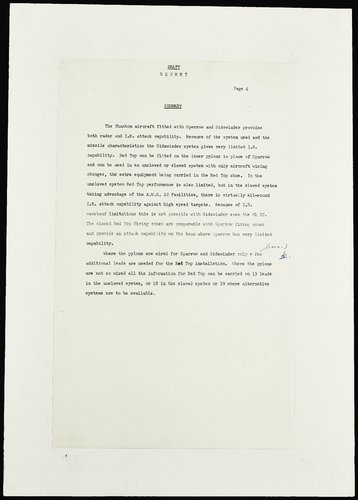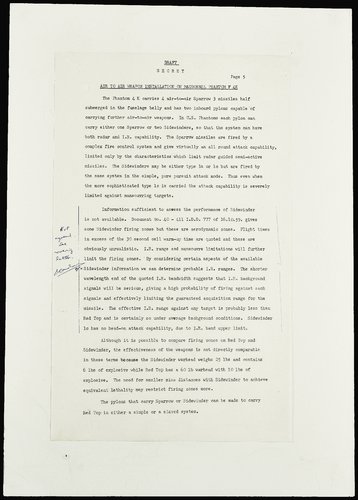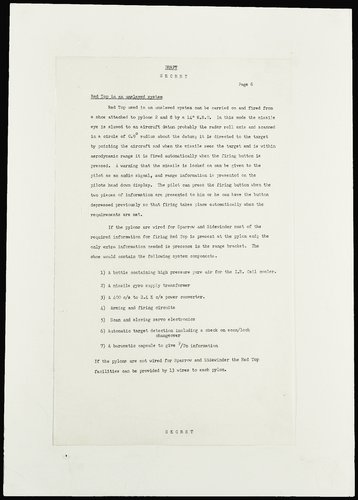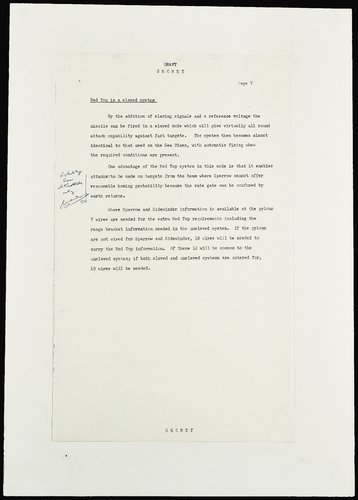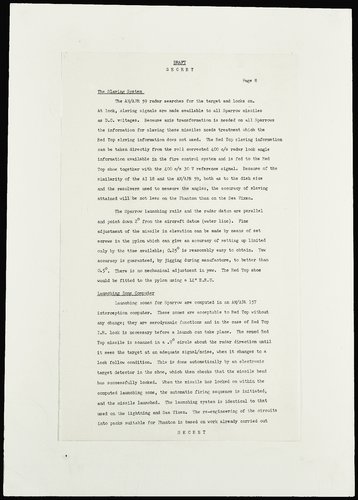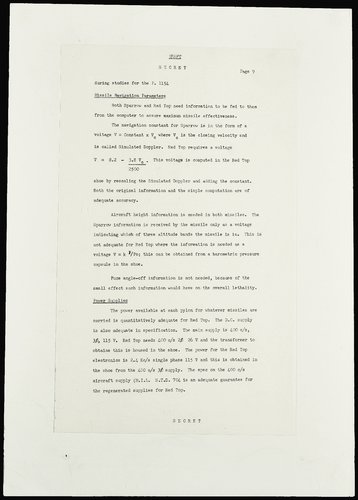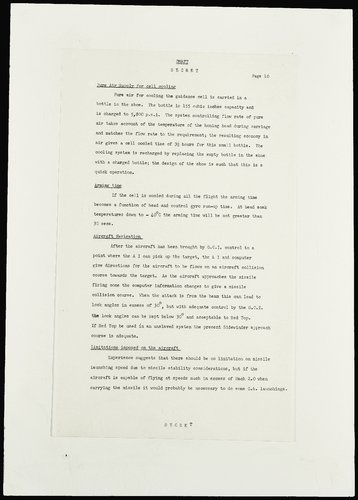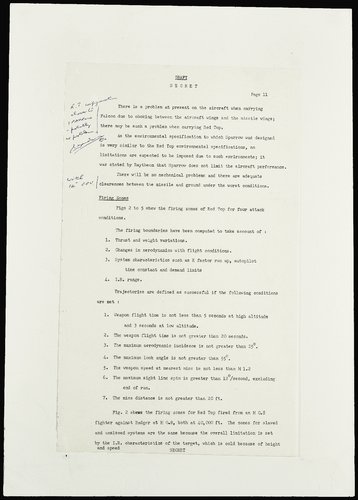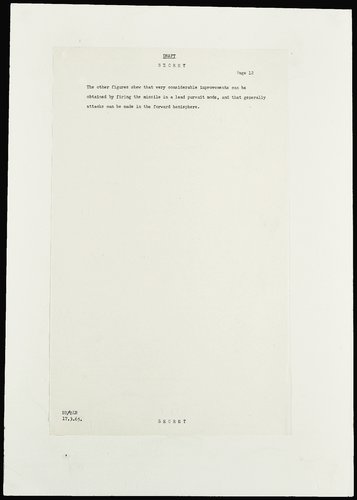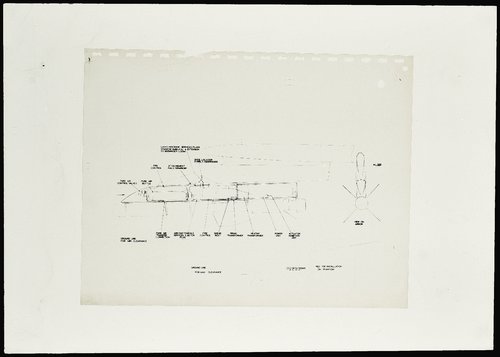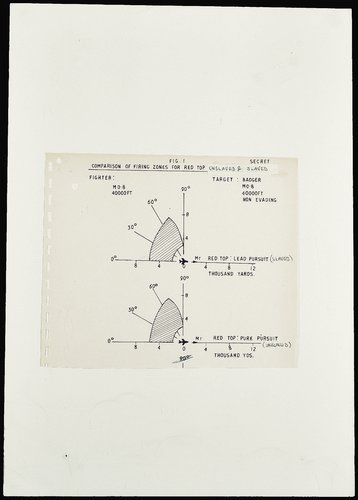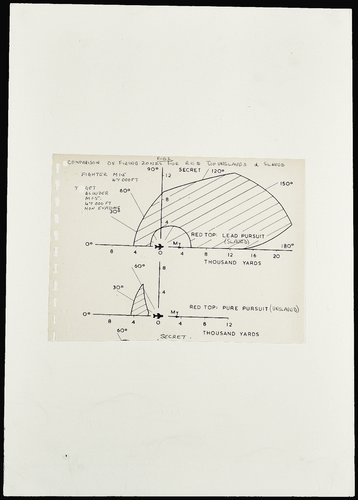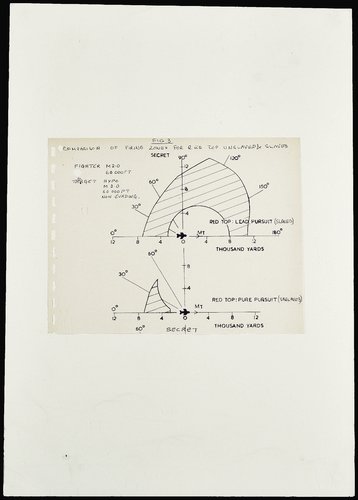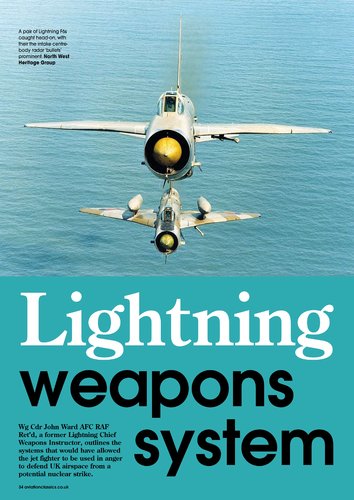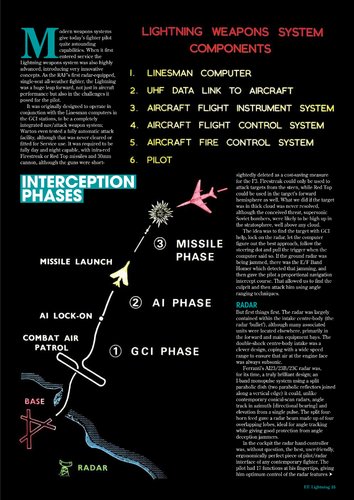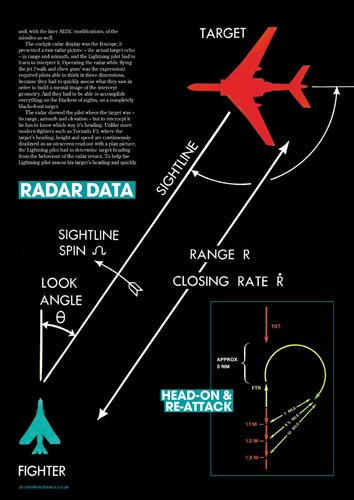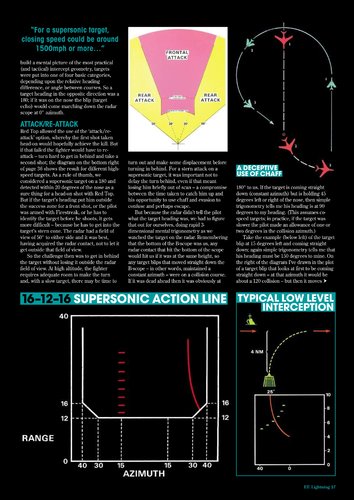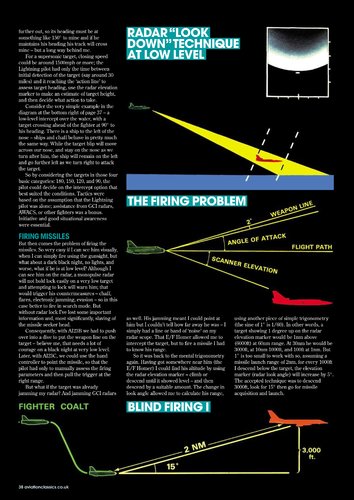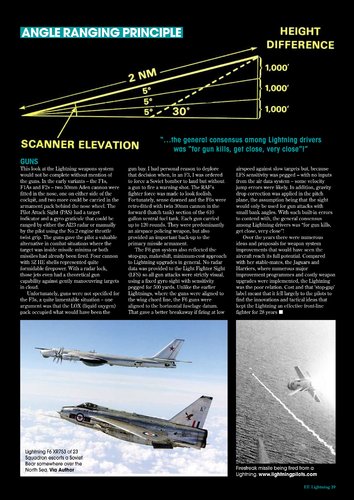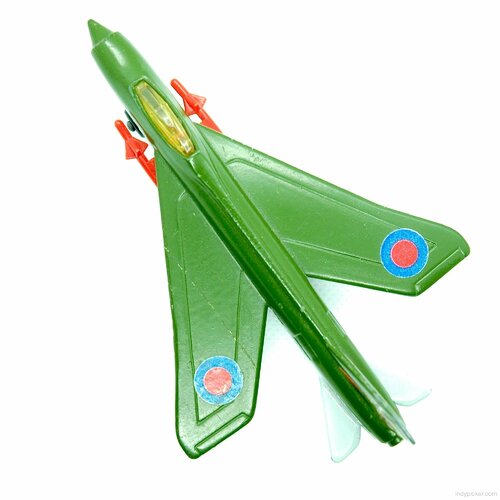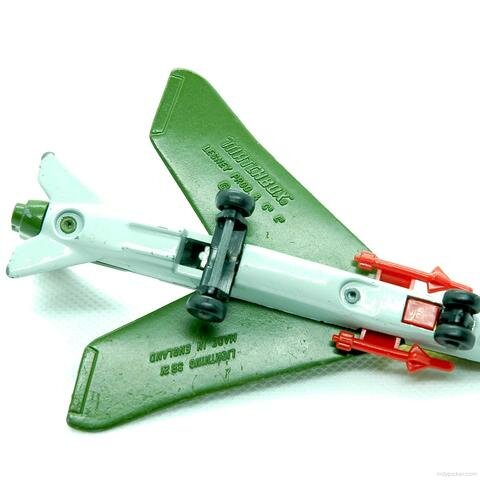GUNDAM123dx
HAVE FUN
- Joined
- 31 October 2017
- Messages
- 63
- Reaction score
- 142
All from Lightning F.53 Pilots Notes & DEFE 69/489.
First, performance in Lightning F.53 Pilots Notes:
Maximum overload: 12G lateral acceleration / 7.5G without wings (20G when engine burning according to another source but not authoritative: http://www.loneflyer.com/2020/05/08/hawker-siddeley-red-top/) and rate of roll 30°/sec
Motor Burn time: 2.5 sec (basically 3 sec, you can search the thread about Linnet rocket engine in this forum - there is a document about it)
Max flight time: 30 sec
Seeker FOV: 5° / After launch warning: 1°
Seeker gimbal limit pre-launch: 30° unslaved; 30° slaved by AI23S (export version of AI23B), seeker "looking axis" parallel to A1 scanner axis
Seeker gimbal limit (post-launch): should be above 30°
Warhead explosive mass: 40lbs/18.14kg ( and there's also continous rod)
Proximity fuse range: 40ft/12m
( Here also mentioned "an all-round attack capability")
First, performance in Lightning F.53 Pilots Notes:
Maximum overload: 12G lateral acceleration / 7.5G without wings (20G when engine burning according to another source but not authoritative: http://www.loneflyer.com/2020/05/08/hawker-siddeley-red-top/) and rate of roll 30°/sec
Motor Burn time: 2.5 sec (basically 3 sec, you can search the thread about Linnet rocket engine in this forum - there is a document about it)
Max flight time: 30 sec
Seeker FOV: 5° / After launch warning: 1°
Seeker gimbal limit pre-launch: 30° unslaved; 30° slaved by AI23S (export version of AI23B), seeker "looking axis" parallel to A1 scanner axis
Seeker gimbal limit (post-launch): should be above 30°
Warhead explosive mass: 40lbs/18.14kg ( and there's also continous rod)
Proximity fuse range: 40ft/12m
( Here also mentioned "an all-round attack capability")
Attachments
-
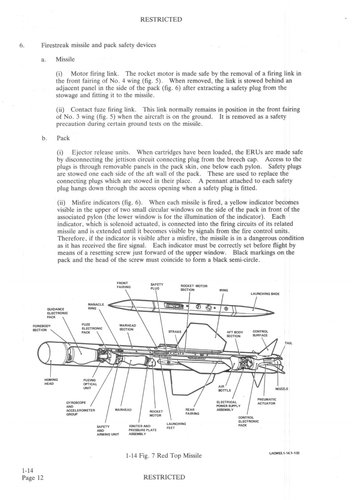 012001363277_0RedTop_1.Jpeg1.9 MB · Views: 415
012001363277_0RedTop_1.Jpeg1.9 MB · Views: 415 -
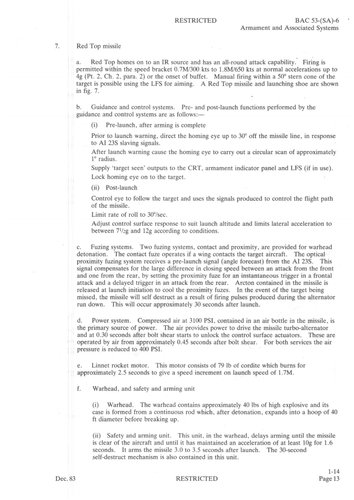 012001363277_0RedTop_2.Jpeg2.1 MB · Views: 390
012001363277_0RedTop_2.Jpeg2.1 MB · Views: 390 -
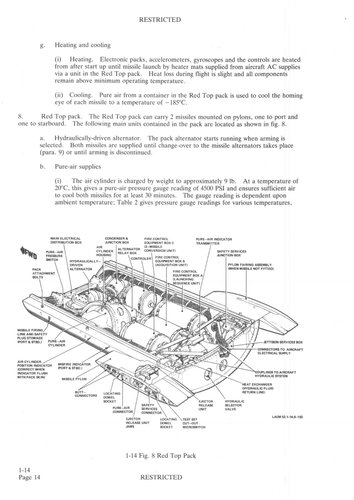 012001363277_0RedTop_3.Jpeg2 MB · Views: 323
012001363277_0RedTop_3.Jpeg2 MB · Views: 323 -
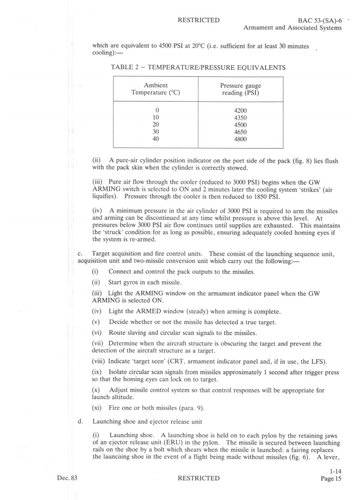 012001363277_0RedTop_4.Jpeg1.8 MB · Views: 300
012001363277_0RedTop_4.Jpeg1.8 MB · Views: 300 -
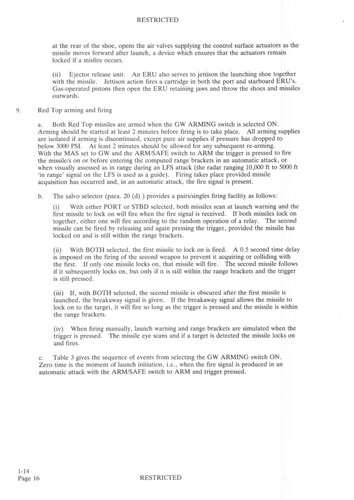 012001363277_0RedTop_5.Jpeg1.9 MB · Views: 245
012001363277_0RedTop_5.Jpeg1.9 MB · Views: 245 -
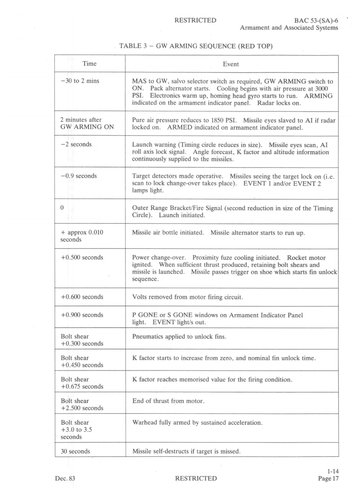 012001363277_0RedTop_6.Jpeg1.8 MB · Views: 276
012001363277_0RedTop_6.Jpeg1.8 MB · Views: 276 -
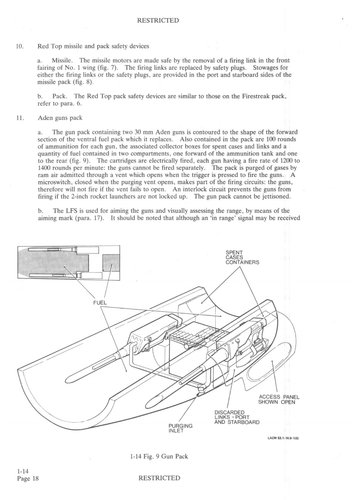 012001363277_0RedTop_7.Jpeg1.9 MB · Views: 326
012001363277_0RedTop_7.Jpeg1.9 MB · Views: 326
Last edited:

